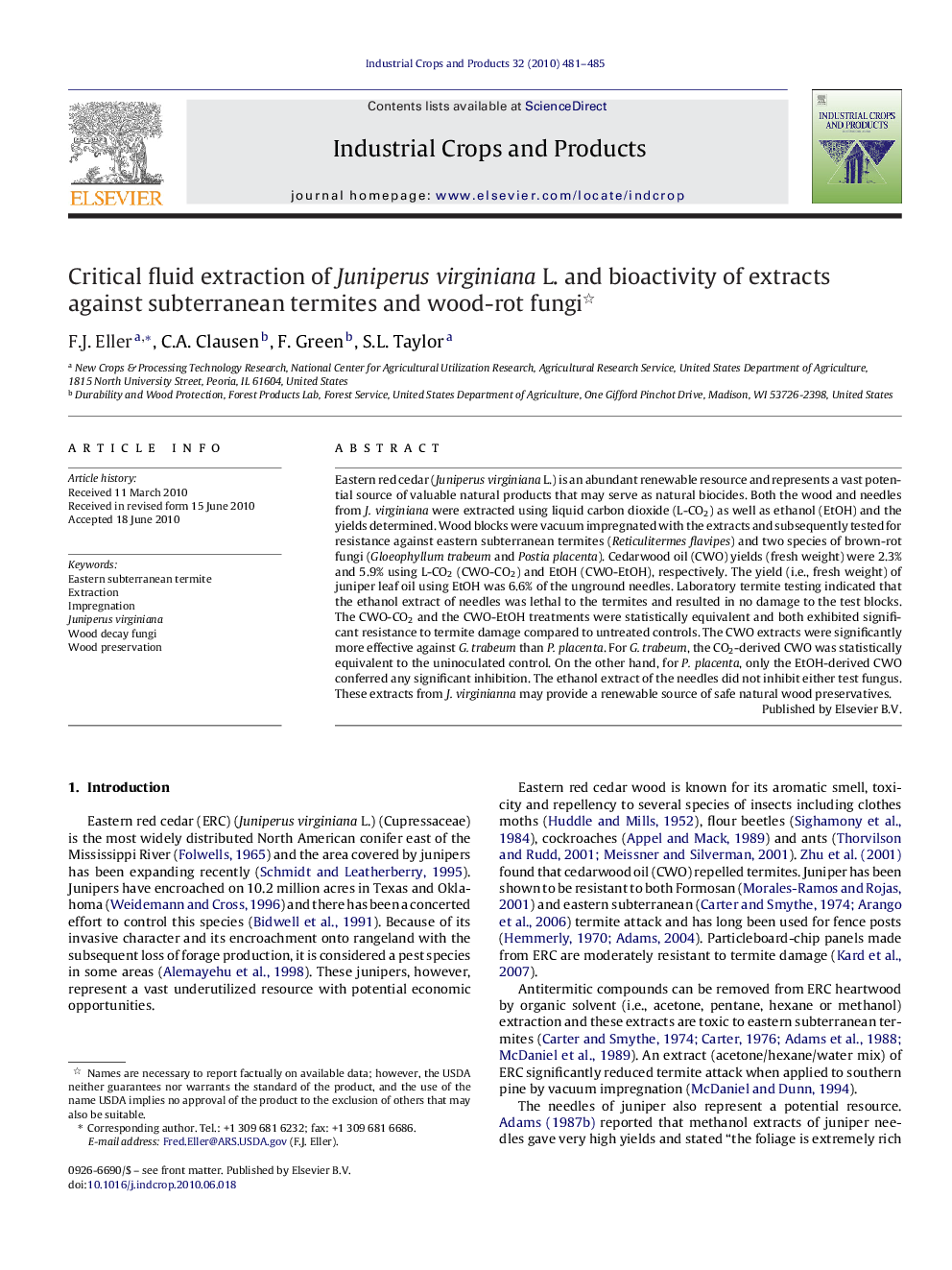| Article ID | Journal | Published Year | Pages | File Type |
|---|---|---|---|---|
| 4514737 | Industrial Crops and Products | 2010 | 5 Pages |
Eastern red cedar (Juniperus virginiana L.) is an abundant renewable resource and represents a vast potential source of valuable natural products that may serve as natural biocides. Both the wood and needles from J. virginiana were extracted using liquid carbon dioxide (L-CO2) as well as ethanol (EtOH) and the yields determined. Wood blocks were vacuum impregnated with the extracts and subsequently tested for resistance against eastern subterranean termites (Reticulitermes flavipes) and two species of brown-rot fungi (Gloeophyllum trabeum and Postia placenta). Cedarwood oil (CWO) yields (fresh weight) were 2.3% and 5.9% using L-CO2 (CWO-CO2) and EtOH (CWO-EtOH), respectively. The yield (i.e., fresh weight) of juniper leaf oil using EtOH was 6.6% of the unground needles. Laboratory termite testing indicated that the ethanol extract of needles was lethal to the termites and resulted in no damage to the test blocks. The CWO-CO2 and the CWO-EtOH treatments were statistically equivalent and both exhibited significant resistance to termite damage compared to untreated controls. The CWO extracts were significantly more effective against G. trabeum than P. placenta. For G. trabeum, the CO2-derived CWO was statistically equivalent to the uninoculated control. On the other hand, for P. placenta, only the EtOH-derived CWO conferred any significant inhibition. The ethanol extract of the needles did not inhibit either test fungus. These extracts from J. virginianna may provide a renewable source of safe natural wood preservatives.
Research highlights▶ Ethanol and CO2 yielded 5.9% and 2.3%, respectively from cedar heartwood. ▶ Juniperus virginiana wood extracts conferred resistance towards termites. ▶ Wood-rot fungi were inhibited by Juniperus virginiana heartwood extracts. ▶ The yield from Juniperus virginiana needles was 6.6% using ethanol. ▶ The ethanol extract of Juniperus virginiana needles was lethal to termites.
